RWA TVL hits a new high: the rise of traditional finance and huge opportunities in the next decade?

Reprinted from panewslab
02/21/2025·3MAuthor: @ Moomsxxx
Compilation: Vernacular Blockchain
The RWA sector is growing at an astonishing rate. Just a few days ago, the total value of RWA just hit a new high and today it broke this new record.
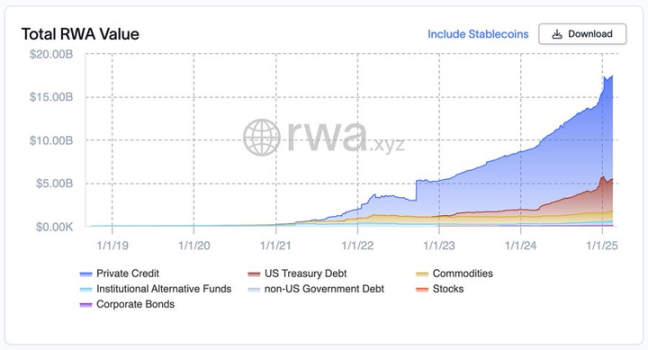
1. RWA TVL
Although many challenges related to privacy solutions, digital identity solutions, interoperability, etc. continue to create operational friction and become a bottleneck for faster adoption, the $2-3 billion raised through on-chain funds and about The $200 billion stablecoin shows growing interest and adoption in the Web3 industry.
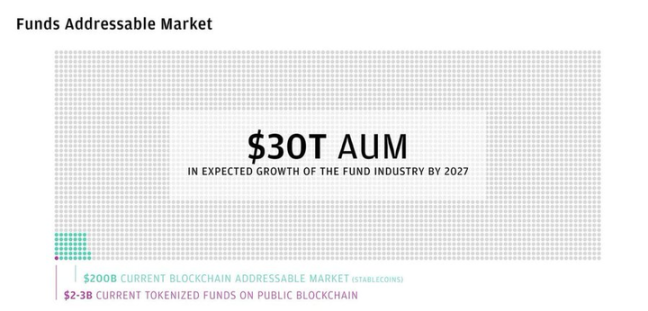
The current Tokenized funds account for only a small part of the expected growth of the fund industry in the next few years.
Similarly, growth in the private credit sector can reflect the growing interest of market participants in Bitcoin, DeFi native earnings, alternative coins and other opportunities beyond meme coins.
According to @Preqin, the investment scale of the global private credit market is close to $1.7 trillion, while the size of Tokenized private credit is only about $11.9 billion, according to @RWA_xyz.
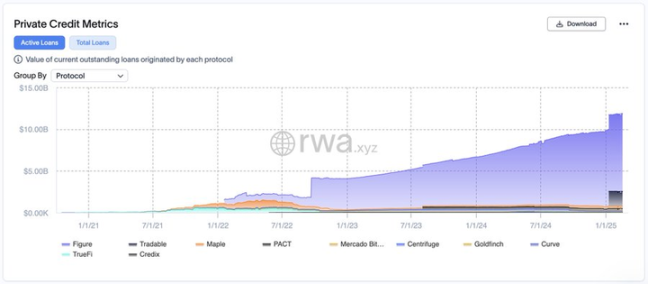
Active Loan Value - Private Credit Market (Source: RWA.xyz)
Deeply analyzing this area, I think it is necessary to mention that the reliability of these loans has changed dramatically since the market crash in 2022, and teams across platforms have become more cautious and invested more resources to ensure higher quality of the credit issued .
From July 2021 to the end of 2022, borrowing agents are mainly dominated by crypto trading and market makers. Therefore, borrowing generation in this field collapsed in the 2022 bear market.
Since then, the growth has mainly come from real-world borrowing mainly based on consumer asset-backed securities (such as car loans, credit card debts, student loans, small commercial loans, etc.), real estate transition loans, trade financing, and other asset classes with less volatile nature. .
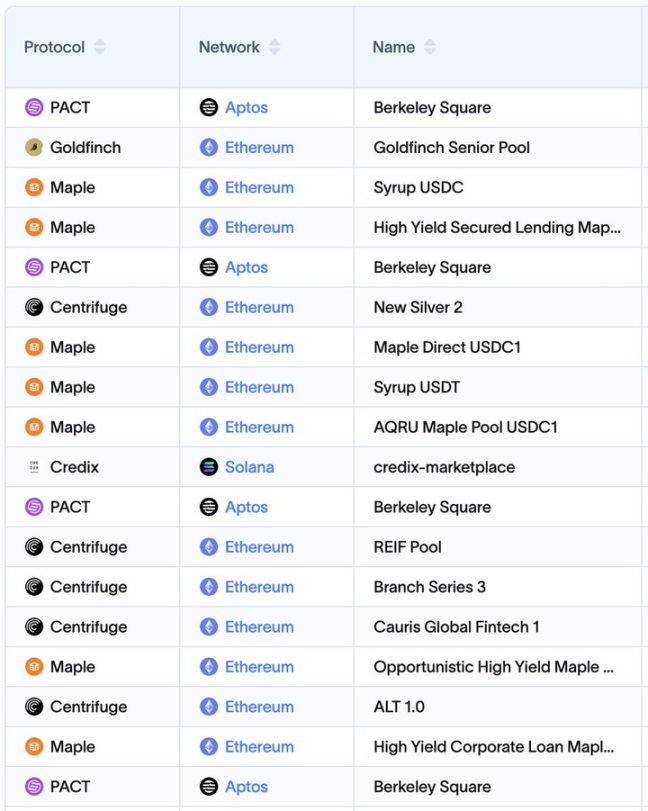
Funding pools for various RWA transactions
The proof of this is what a resilient protocol like @maplefinance shows in the liquidation event on February 3, 2025 - this event is the largest liquidation event in crypto history. For more details, please see the following link: https://x.com/maplefinance/status/1886332880411832514 In addition, in the past three years, the industry has matured considerably, and technical solutions are emerging continuously, aiming to solve regulatory and Privacy obligations, thereby further improving this critical area.
2. Opportunity Scale
According to @BCG data, Tokenization of all mutual funds around the world may unlock an additional $100 billion in annual returns for investors. Meanwhile, "mature investors" (sorry, not you) earn $400 billion by "grabing changes in intraday value" (in layman's terms, day trading). Judging from the historical adoption model of ETFs, it is reasonable to expect that Tokenized funds will account for 1% of the global mutual funds and ETF asset management scale in the next seven years.
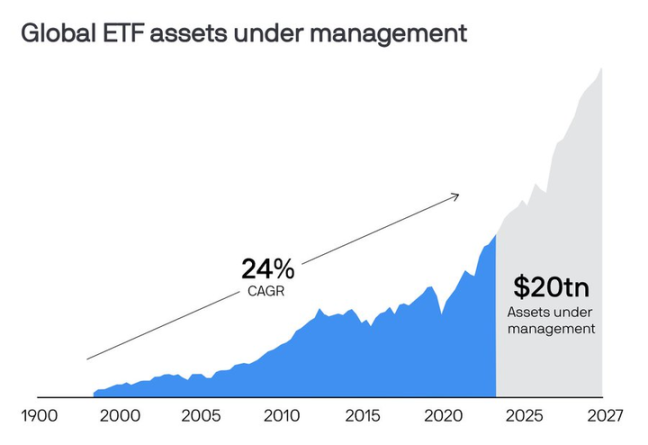
Global ETF Asset Management Scale (Source - JP Morgan Asset Management)
This means that by 2030, Tokenized assets will exceed US$600 billion.
Additionally, if regulators allow existing mutual funds and ETFs to be converted into tokenized funds (which is easier than launching a new tokenized fund), we may see trillions of dollars in asset management.
Given that there were similar growth expectations before the launch of the BTC ETF, I don't think we can rule out that these numbers may be too conservative and that the actual growth could be astonishingly high.
However, even based on these expectations, we are still talking about growth of at least 200 times.
Again, from now on, at least 200 times the growth.
And are you still sitting there and upset because you haven't made money for the time being?
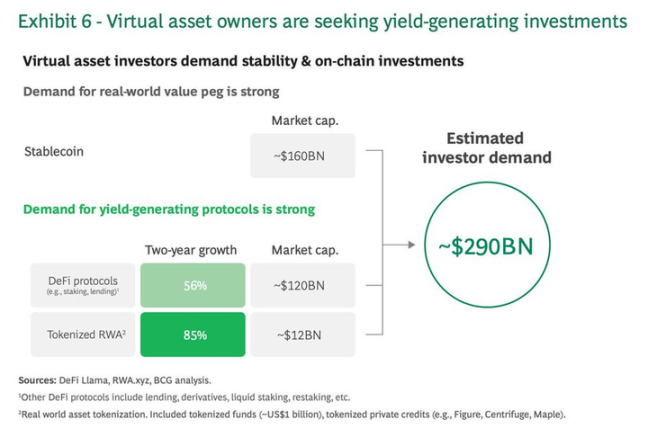
Give me the benefits, please!
According to this @BCG study, our industry's investment demand for Tokenized funds is approximately US$290 billion. This figure includes the needs of stablecoin holders, tokenized RWA and DeFi protocols.
I think this number may be high because they consider the growth of the market capitalization of the DeFi protocol market, which comes from a user group with a higher risk appetite, and their investment tendencies may be different from those willing to invest in Tokenized assets. crowd.
A more reasonable approach is to consider the growth of DeFi total value lockout (TVL) over the past two years, and despite this, it will still be a considerable number: $58.06 billion (source - @DefiLlama).
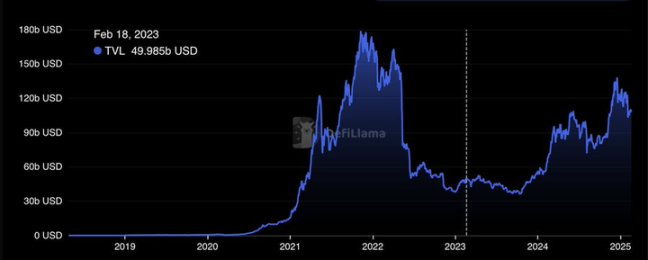
DeFi Total Value Lock (TVL)
In any case, the value propositions of Tokenization Fund and RWA are undeniable. They provide access to real-world investment opportunities, allowing investors to better diversify their portfolios when markets change dynamically.
Just imagine if you could exchange your on-chain tokens for stocks, commodities and real estate through @Rabby_io in the past few months without withdrawing cash?
But why does this have to happen? What are the benefits for traditional finance? I haven't seen much discussion on this topic recently on crypto-tweets (CT), especially now in the craze and strife of memecoin. We always talk about how traditional finance (tradFi) gets into the Web3 industry and adopts the technology we are building. But why do they do this? While I plan to write an article dedicated to this topic, here are some key points that explain why traditional finance requires and must adopt crypto rail:
- Instant settlement is shown in the figure below, which could add about $50 billion to investors' portfolio each year.
- Reducing commissions will result in an additional $33 billion in savings that will eventually flow into investors' portfolios.
- Composable Tokenized funds will be more easily loaned.
- Accessible trading tokenization will make it easier for investors to trade assets.
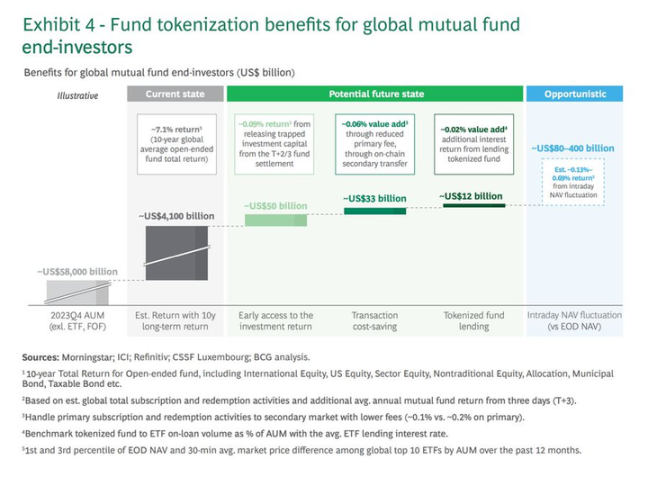
How to improve returns by tokenization (Source: Boston Consulting Group)
3. Emotion is second, motivation is first
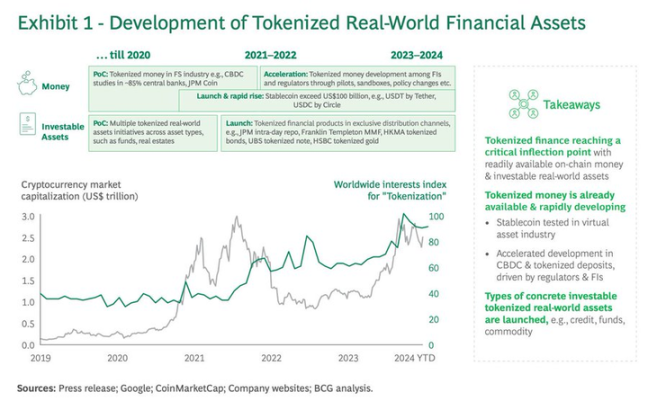
Traditional finance bids, while crypto-tweets (CT) are cut.
The chart above shows that regardless of the market, especially the sentiment of crypto-twitter (CT) (laughs), traditional financial institutions have a stronger interest in tokenization, encryption and blockchain than ever before.
This reminds you how incredible the years will be.
Think about it: If traditional financial institutions were interested in Tokenization and encryption in the past—even if there were few adoptions, unfriendly regulation, and less innovation at that time—why shouldn’t they become extremely optimistic now?
In fact, there is only one answer.
You know.
4. What do you think of the crypto market?
Even though market participants’ sentiment is at historic lows, most of the discussion focuses on @KaitoAI’s nonsense, Solana’s meme cutting leeks and the dramatic events of KOL, the charts speak loudly about another voice.
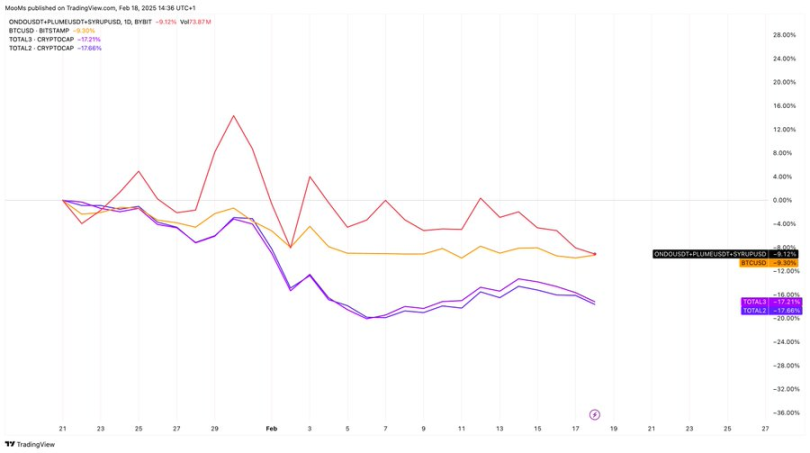
The data won't lie. Since the launch of $TRUMP, RWA's leading protocols have surpassed, or rather, proved that they are more resilient than the overall altcoin market.
If you incorporate more RWA leading protocols into the index and go back to longer periods, the result will be the same.
5. Conclusion
The RWA field is like a huge cake and so far we have only cut a small piece. However, those who are tokenizing early will get a large portion, while others can only pick up the remaining debris. Traditional finance knows this, which is why they are accelerating the process.
I will end with a comment from the @DigitalAssets report: "Looking back on the outlook for 2025, it's clear that investors have not missed the opportunity to join the digital asset wave. In fact, we think we may be entering a new era of digital assets, this era of It is expected to span years — even decades. This era may see digital assets penetrate into various industries — industry, technology, sectors, balance sheets, and even national levels. The key issue facing investors now is not whether to participate , but how they will actively participate in this change.



 chaincatcher
chaincatcher